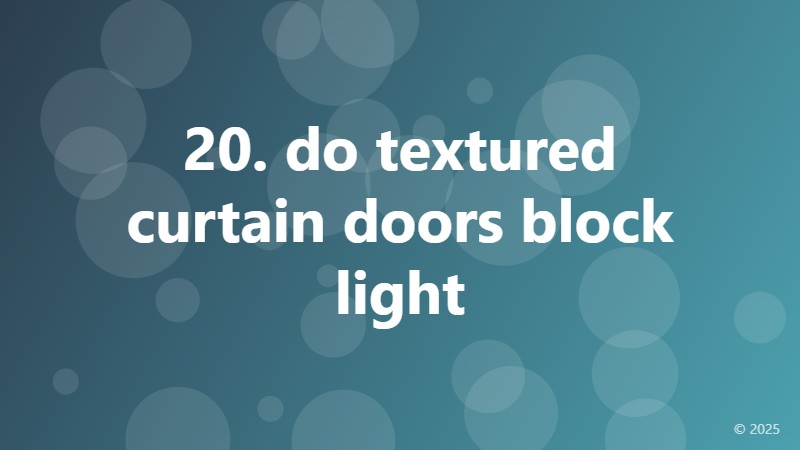20. do textured curtain doors block light

The Impact of Textured Curtain Doors on Light Blockage
When it comes to decorating our homes, we often focus on aesthetics, but forget about the functional aspects of our design choices. One such aspect is the amount of light that enters our rooms. Textured curtain doors are a popular choice for adding a touch of elegance to our windows, but do they block light? In this article, we'll delve into the world of textured curtain doors and explore their impact on light blockage.
What are Textured Curtain Doors?
Textured curtain doors, also known as textured drapes or curtains, are a type of window treatment that features a unique, raised pattern or design on the fabric. These patterns can range from subtle, tone-on-tone designs to bold, contrasting motifs. The textured effect is achieved through various techniques, such as weaving, embossing, or printing.
How Do Textured Curtain Doors Affect Light?
The answer to this question lies in the type of texture and fabric used in the curtain doors. Generally, textured curtain doors can block some amount of light, depending on the density and thickness of the fabric. Thicker, more densely woven fabrics tend to block more light, while thinner, looser weaves allow more light to pass through.
However, the amount of light blockage also depends on the specific texture pattern. For instance, a curtain door with a busy, intricate pattern may block more light than one with a simpler, more subtle design. This is because the complex pattern creates more shadows and reduces the overall transparency of the fabric.
Factors Affecting Light Blockage in Textured Curtain Doors
Several factors can influence the amount of light blockage in textured curtain doors. These include:
- Fabric type: Thicker fabrics like velvet or linen tend to block more light than thinner fabrics like cotton or silk.
- Texture pattern: Busy, intricate patterns block more light than simpler designs.
- Color: Darker colors tend to block more light than lighter colors.
- Opacity: The level of opacity in the fabric can significantly impact light blockage.
Conclusion
In conclusion, textured curtain doors can block some amount of light, depending on the fabric, texture pattern, and other factors. While they can add a touch of elegance to your windows, it's essential to consider their impact on light blockage, especially if you're looking to maximize natural light in your home. By choosing the right fabric, texture, and color, you can strike a balance between aesthetics and functionality.